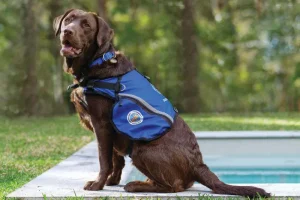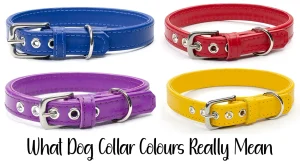What It Means When a Dog Wears a Blue Vest, Leash, or Bandana

If you see a dog wearing blue gear such as a vest or leash, it could be more than just a fashion choice. Blue is frequently used to indicate that a dog is a service animal or currently in training. While there’s no official color code, this is a widely recognized signal. These dogs support individuals with disabilities and should never be distracted while working.
Therapy dogs may also wear blue, but it’s important to note that they don’t have the same legal public access rights as service dogs. Similarly, young or trainee service dogs might wear blue gear to signal that they are still learning—like a “student driver” sign for humans.
That said, not every dog wearing blue is on official duty. Sometimes, blue is simply the owner’s favorite color. Still, being aware of color cues helps the public treat working dogs with the respect they deserve.
Other vest color signals include yellow, which usually means the dog needs space and should not be approached. Red often indicates “Do Not Pet” or identifies a dog actively working. Green usually denotes a dog in training or a friendly working animal.

Common Colour Meanings for Dog Collars & Leads:
Blue – Often used for service dogs or dogs in training. They’re likely working, so it’s best not to distract them.
Green – This dog is friendly and happy to interact. Great for sociable pups who love attention.
Orange – Suggests the dog isn’t good with other dogs, so it’s best to keep yours at a distance when passing.
Purple – A polite way of saying “Please don’t feed me.” Some dogs have allergies or strict diets.
Red – A warning colour, usually meaning the dog may be unpredictable, anxious, or aggressive. Always ask before approaching.
Yellow – Often used for nervous or reactive dogs who need space. It can also suggest the dog is looking for adoption or is new to their surroundings.
White – May indicate the dog is deaf, blind, or has limited sight or hearing. Give them space and be gentle in your approach.

Ribbons Instead of Collars
Sometimes you’ll see a coloured ribbon tied to a lead or collar instead. This serves the same purpose, especially when walking a dog in public spaces. If you spot a ribbon you don’t recognise — just ask! Most dog owners will be happy to explain.
Respecting Dogs on Walks
It’s important to remember: not every colourful collar means something specific. Many dog owners simply choose a colour they love (red is one of the most popular!). But if you’re ever unsure, it’s always best to ask before petting or approaching a dog.
Giving a little space and showing respect helps everyone enjoy their walk — humans and dogs alike.
Next time you see a dog in blue gear, take a moment to consider its role. It could be hard at work, playing a vital part in someone’s daily life. Recognizing and respecting these signals supports both the dogs and the people who rely on them.
